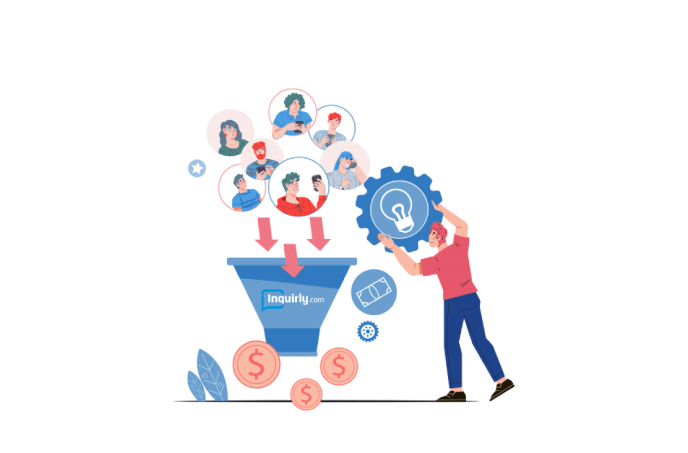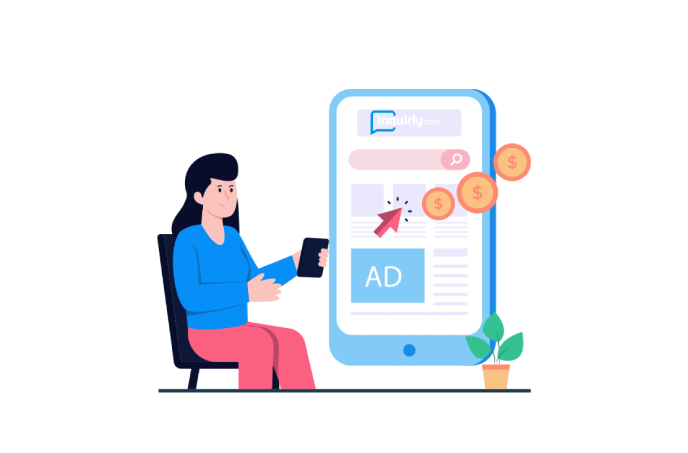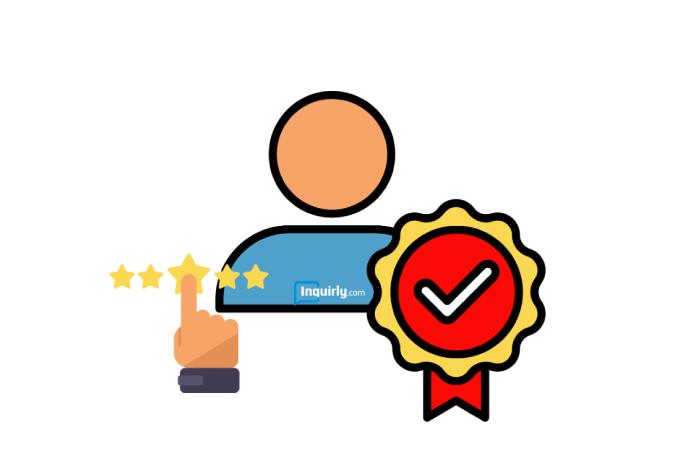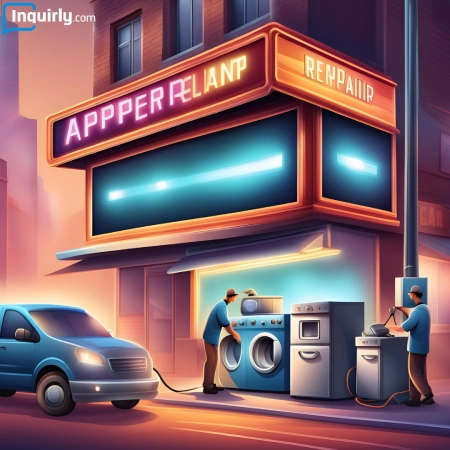Table of Contents
- Understanding Your Leads
- Identifying High-Quality Leads
- Segmenting Leads for Targeted Approaches
- Optimizing Your Online Presence
- Website Optimization for Lead Conversion
- Using SEO to Attract More Leads
- Using Online Reviews and Testimonials
- Effective Lead Nurturing Strategies
- Personalized Email Marketing Campaigns
- Engaging Leads with Webchat and Live Support
- Content Marketing to Establish Authority
- Using Paid Advertising
- Pay-Per-Click (PPC) Campaigns
- Social Media Advertising
- Building Trust and Credibility
- mportance of Customer Reviews and Feedback
- Creating a Referral Program
- Tracking and Analyzing Lead Sources
- Implementing Analytics Tools
- Measuring ROI and Adjusting Strategies
- Conclusion
- Useful Resources and Books
.
Return on investment (ROI) is a critical metric that measures the profitability of your expenses. In digital marketing, understanding your ROI is essential as it helps you assess potential returns before committing any funds.
In the competitive appliance repair industry, converting leads into loyal customers is the cornerstone of maximizing ROI. With numerous businesses vying for attention, effective lead conversion strategies are crucial. But why is lead conversion so important?
First, converting leads directly impacts revenue growth. Repeat business and referrals are powerful drivers of your bottom line. Loyal customers, who trust your services, are more likely to return for future repairs, ensuring a steady stream of business. Moreover, retaining customers is more cost-effective than acquiring new ones, boosting your profitability. Last, a perfect reputation is invaluable. Satisfied customers leave positive reviews and refer others, enhancing your business’s reputation and attracting new leads.
In this article, we will talk about the importance of lead conversion in the appliance repair industry and highlight key strategies to transform more leads into loyal customers. By focusing on these tactics, you can ensure sustained growth and profitability for your business. Let’s dive in!
Understanding Your Leads

Converting leads into loyal customers starts with understanding who your leads are.
Not all leads are created equal. High-quality leads are those most likely to convert into paying customers. Here is how to identify them:
- Urgency of Need – leads needing immediate appliance repairs are more likely to convert quickly. Look for signals like urgent requests for quotes or same-day service inquiries.
- Service Match – ensure the leads are seeking services you specialize in. A lead looking for refrigerator repair will be high-quality if your business excels in that area.
- Engagement Level – leads that interact more with your content, such as filling out contact forms or responding to emails, show a higher level of interest and are more likely to convert.
Segmenting Leads for Targeted Approaches

Once you have identified high-quality leads, segment them to tailor your marketing efforts more effectively:
- By Appliance Type – group leads based on the type of appliance they need to be repaired (e.g., refrigerators, ovens, washers). This allows you to send targeted messages and promotions relevant to their specific needs.
- Geographic Location – segment leads by their location to offer localized promotions or emphasize your quick service in their area.
- Customer History – differentiate between new leads and returning customers. Returning customers might respond well to loyalty programs or maintenance reminders, while new leads might need more information about your services and reputation.
By understanding and segmenting your leads, you can create more personalized and effective marketing campaigns, increasing your chances of converting these leads into loyal customers. This targeted approach not only improves conversion rates but also maximizes your marketing efforts, leading to better ROI.
Optimizing Your Online Presence
A strong online presence is essential for converting leads into loyal customers. Let’s discuss how to optimize your website for lead conversion, utilize SEO to attract more leads, and leverage online reviews and testimonials to build trust and credibility.
Website Optimization for Lead Conversion
Your website is often the first impression potential customers have of your business. Here is how to optimize it for better lead conversion:
- User-Friendly Design – ensure your website is easy to navigate with a clean, intuitive design. Make sure that important information, like services offered and contact details, are easily accessible.
- Clear Calls-to-Action (CTAs) – use strong CTAs such as “Book Now” or “Get a Free Quote” to guide visitors towards taking action. Place these CTAs prominently on your homepage and service pages.
- Mobile Optimization – with many users accessing websites via mobile devices, ensure your site is mobile-friendly. A responsive design improves user experience and can boost your search engine rankings.
For more on website optimization best practices, check out this HubSpot guide.
Using SEO to Attract More Appliance Repair Leads
Search engine optimization is crucial for improving your website’s visibility and attracting organic traffic. Here are key SEO strategies:
- Keyword Research – identify and use keywords that potential customers are likely to search for, such as “appliance repair near me” or “emergency refrigerator repair.”
- Quality Content – create valuable content that addresses common appliance issues and solutions. Blog posts, FAQs, and how-to guides can help improve your rankings and establish your business as an authority in the field.
- Local SEO – optimize your website for local searches by including your business location in keywords and setting up a Google My Business profile. This helps you appear in local search results and maps.
For comprehensive SEO tips, visit Moz’s Beginner’s Guide to SEO.
Using Online Reviews and Testimonials
Positive reviews and testimonials can significantly influence potential customers. Here is how to leverage them effectively:
- Encourage Reviews – ask satisfied customers to leave reviews on platforms like Google, Yelp, Trustpilot, and HomeAdvisor. Make it easy by providing direct links to your review pages.
- Showcase Testimonials – highlight positive reviews and testimonials on your website and social media channels. Real-life experiences from previous customers can build trust and credibility.
- Respond to Reviews – engage with all reviews, both positive and negative. Thank customers for positive feedback and address any issues raised in negative reviews promptly and professionally. This demonstrates your commitment to customer satisfaction.
For more insights on the power of reviews, check out this article by BrightLocal.
By optimizing your online presence, you can attract more leads, improve conversion rates, and ultimately grow your appliance repair business.
Effective Lead Nurturing Strategies

Nurturing your leads effectively is crucial for converting them into loyal customers. Let’s explore personalized email marketing campaigns, engaging leads with webchat and live support, and content marketing to establish authority.
Personalized Email Marketing Campaigns
Email marketing remains one of the most effective ways to nurture leads. Here’s how to make your campaigns more personalized and impactful:
- Segmentation – divide your email list into segments based on factors like service history, appliance types, and geographic location. This allows you to send tailored messages that resonate with each group.
- Personalized Content – address recipients by their names and customize content based on their interests and past interactions. Send maintenance tips for specific appliances or reminders for upcoming service needs.
- Automation – use email automation to send timely follow-ups, welcome emails for new subscribers, and thank-you notes after service completion. Automation ensures consistent communication without overwhelming your team.
For more insights on effective email marketing, check out Mailchimp’s guide to email marketing.
Engaging Leads with Webchat and Live Support
Implementing webchat and live support on your website can significantly improve lead engagement and conversion rates. Here is why:
- Immediate Assistance – webchat allows potential customers to get their questions answered instantly, addressing their concerns and helping them make quick decisions.
- Personal Touch – live support adds a human element to your online presence, making leads feel valued and understood. It’s an opportunity to build rapport and trust.
- 24/7 Availability – many webchat services offer automated responses for common queries, ensuring you’re always available to assist potential customers, even outside of business hours.
For more on the benefits of webchat, visit HubSpot’s guide on using live chat.
Content Marketing to Establish Authority
Content marketing helps you establish your business as an authority in the appliance repair industry. Here is how to leverage it effectively:
- Educational Content – create blog posts, how-to videos, and infographics that provide valuable information about appliance maintenance and repair. This helps build trust and positions your business as a knowledgeable resource.
- Regular Updates – keep your website and social media channels updated with fresh content. Regular updates signal to search engines and visitors that your business is active and engaged.
- SEO Benefits – quality content improves your SEO, helping you rank higher in search results and attract more organic traffic.
For a comprehensive guide on content marketing, refer to Hubspot.
By implementing these lead nurturing strategies, you can build stronger relationships with your leads, increase conversion rates, and ultimately grow your appliance repair business.
Using Paid Advertising

Paid advertising can provide immediate visibility and attract more leads for your appliance repair business. Here we will discuss the benefits of Pay-Per-Click (PPC) campaigns and social media advertising.
Pay-Per-Click (PPC) Campaigns
PPC campaigns, especially on platforms like Google Ads, are an effective way to drive targeted traffic to your website. Here is how to utilize PPC effectively:
- Targeted Keywords – select keywords relevant to your services, such as “emergency appliance repair” or “refrigerator repair near me.” Targeting these keywords ensures your ads reach people actively searching for appliance repair services.
- Compelling Ad Copy – write clear and compelling ad copy that highlights your unique selling points. Include a strong call-to-action (CTA) like “Book Now” or “Get a Free Quote” to encourage clicks.
- Landing Pages – ensure that the landing pages your ads direct to are optimized for conversions. They should be relevant to the ad content and include clear CTAs to guide visitors toward booking your services.
- Budget Management – set a budget that aligns with your business goals. Monitor your campaigns regularly to see which keywords and ads are performing best, and adjust your spending accordingly.
For more detailed tips on PPC campaigns, check out Google’s guide to PPC advertising.
Social Media Advertising
Social media platforms like Facebook and Instagram are excellent for reaching a wider audience and engaging with potential customers. Here is how to make the most of social media advertising:
- Targeted Ads – use the targeting features of social media platforms to reach specific demographics, such as homeowners in your service area. Tailor your ads to the interests and behaviors of your target audience.
- Engaging Content – create visually appealing and engaging content for your ads. Use high-quality images or videos that showcase your services and include clear CTAs.
- Special Offers – promote special offers or discounts exclusively on social media to attract new leads. Limited-time offers can create a sense of urgency and encourage immediate action.
- Interaction and Engagement – respond promptly to comments and messages on your ads. Engaging with potential customers directly can build trust and increase the likelihood of conversion.
For more insights on effective social media advertising, visit SEMrush’s guide to social media advertising for beginners.
By using PPC campaigns and social media advertising, you can increase your visibility, attract more leads, and boost your appliance repair business.
Building Trust and Credibility

Establishing trust and credibility is crucial for converting leads into loyal customers in the appliance repair industry. Let’s discuss the importance of customer reviews and feedback, and how to create an effective referral program.
Importance of Customer Reviews and Feedback
Customer reviews and feedback play a significant role in building trust and credibility for your business. Here is why they matter:
- Social Proof – positive reviews act as social proof, showing potential customers that others have had satisfactory experiences with your services. This can greatly influence their decision to choose your business.
- Improved SEO – online reviews can improve your search engine rankings, making it easier for potential customers to find you. Google, for instance, considers reviews in its local search algorithm.
- Customer Insight – feedback provides valuable insights into what your customers appreciate and what areas need improvement. Use this information to enhance your services and address any issues promptly.
.
Tips for Encouraging Reviews and Feedback:
- Ask for Reviews – after completing a service, politely ask satisfied customers to leave a review. Provide direct links to review sites like Google, Yelp, and HomeAdvisor.
- Make It Easy – simplify the review process by including links in follow-up emails or text messages.
- Respond to Reviews – engage with all reviews, thanking customers for positive feedback and addressing any negative comments professionally. This shows that you value their input and are committed to excellent service.
Creating a Referral Program
A referral program can be a powerful tool for generating new leads and building trust. Here is how to set up an effective program:
- Incentives – offer attractive incentives for both the referrer and the new customer. This could be discounts on future services, gift cards, or even cash rewards.
- Easy Referral Process – make it simple for customers to refer friends and family. Provide pre-written messages they can share via email or social media, and ensure the process is straightforward and quick.
- Promote Your Program – actively promote your referral program through your website, social media channels, and email marketing. Make sure your customers are aware of the benefits they can receive by participating.
.
Steps to Implement a Referral Program:
- Define Your Offer – decide what incentives you will offer and clearly communicate these to your customers.
- Track Referrals – use a tracking system to monitor referrals and ensure that rewards are given out promptly and accurately.
- Thank Participants – always thank customers who refer others to your business. A personal note or small gift can go a long way in showing your appreciation.
.
For more ideas on creating a successful referral program, check out Referral Factory’s guide to referral marketing.
By using customer reviews and feedback, and implementing a well-structured referral program, you can build trust and credibility with your leads, ultimately converting them into loyal customers.
Tracking and Analyzing Lead Sources
To maximize ROI and improve your lead conversion strategies, it’s essential to track and analyze where your leads come from. Here we will discuss implementing analytics tools and measuring ROI to adjust your strategies effectively.
Implementing Analytics Tools
Using analytics tools helps you gather valuable data about your leads, which can be used to refine your marketing efforts. Here is how to get started:
- Google Analytics – it provides comprehensive data about your website traffic, including where your leads are coming from, which pages they visit, and how long they stay on your site. Set up goal tracking to monitor conversions and understand which sources drive the most leads.
- Customer Relationship Management (CRM) Software – ools like HubSpot, Zoho CRM, and Salesforce help track interactions with leads across various touchpoints. They can provide insights into lead sources, customer journeys, and conversion rates.
- Call Tracking Software – for businesses relying on phone calls, tools like CallRail or RingCentral can track which marketing efforts are driving calls, providing data on call duration, outcomes, and more.
.
Tips for Effective Implementation:
Set Up Goals – define what a successful conversion looks like (e.g., booking an appointment, filling out a contact form) and set these as goals in your analytics tools.
Regular Monitoring – regularly review your analytics data to identify trends and patterns. Look for high-performing channels and areas that need improvement.
Integrate Tools – ensure your analytics tools are integrated with your CRM and other marketing software to get a holistic view of your lead sources and customer interactions.
For more on setting up and using Google Analytics, visit Google Analytics Help Center.
Measuring ROI and Adjusting Strategies
To make informed decisions, it is crucial to measure the ROI of your marketing efforts and adjust your strategies accordingly. Here is how:
Calculate ROI: Determine the return on investment for each marketing channel by comparing the revenue generated from leads to the costs of acquiring them. Use the formula:

.
Analyze Performance – look at the performance metrics for each channel. Which ones are driving the most leads? Which are converting leads into paying customers at the highest rate? Focus on metrics such as conversion rates, cost per lead, and customer acquisition costs.
Adjust Strategies – based on your analysis, adjust your marketing strategies. Allocate more budget to high-performing channels and refine or eliminate underperforming ones. For example, if social media ads are driving more conversions than PPC campaigns, consider increasing your social media budget.
Practical Steps:
- Regular Reports – generate regular reports to keep track of your ROI and performance metrics. This helps in making timely adjustments to your strategies.
- Experiment and Iterate – continuously test different approaches and iterate based on what works best. For example, try different ad copies, landing pages, or email templates to see what resonates most with your audience.
By implementing analytics tools and regularly measuring ROI, you can gain valuable insights into your lead sources and optimize your marketing strategies for better performance and higher returns.
Conclusion
Maximizing ROI by converting appliance repair leads into loyal customers requires a strategic approach. Let’s recap the key points discussed throughout this guide and offer some final thoughts on enhancing your lead conversion efforts.
Understanding Your Leads – identify high-quality leads and segment them for targeted marketing. Focus on leads with urgent needs, specific service matches, and high engagement levels.
Optimizing Your Online Presence – ensure your website is user-friendly, mobile-optimized, and rich in relevant content. Leverage SEO to attract more organic traffic and use positive online reviews to build trust and credibility.
Effective Lead Nurturing Strategies – personalize your email marketing campaigns, engage leads with webchat and live support, and use content marketing to establish your authority in the appliance repair industry.
Utilizing Paid Advertising – invest in PPC and social media ads to increase visibility and attract targeted leads. Use compelling ad copy and clear CTAs to drive conversions.
Building Trust and Credibility – encourage customer reviews and feedback, and create a referral program to generate new leads and build loyalty.
Tracking and Analyzing Lead Sources – use analytics tools to track where your leads come from and measure the ROI of your marketing efforts. Regularly adjust your strategies based on data insights to improve performance.
Case Studies and Success Stories – learn from real-world examples of successful lead conversion strategies in the appliance repair industry. Apply best practices to enhance your own efforts.
Remember, the key to success lies in consistently evaluating and refining your strategies based on data-driven insights. Stay proactive in your approach, and always prioritize customer satisfaction to build lasting relationships.
By implementing these strategies, you can turn more leads into loyal customers, ensuring long-term success for your appliance repair business.
Useful Resources and Books
- “Conversion Optimization: The Art and Science of Converting Prospects to Customers” by Khalid Saleh and Ayat Shukairy.
- A comprehensive guide on understanding customer behavior and optimizing conversion rates.
- “Influence: The Psychology of Persuasion” by Robert B. Cialdini.
- This classic book explores the psychology behind why people say “yes” and how to apply these insights to improve lead conversion.
- “Hacking Growth: How Today’s Fastest-Growing Companies Drive Breakout Success” by Sean Ellis and Morgan Brown.
- Offers strategies used by top companies to drive growth through innovative marketing techniques.
- “Building a StoryBrand: Clarify Your Message So Customers Will Listen” by Donald Miller.
- Focuses on creating a compelling brand story that resonates with customers and drives conversions.
- “The Lean Startup: How Today’s Entrepreneurs Use Continuous Innovation to Create Radically Successful Businesses” by Eric Ries.
- A must-read for understanding how to create a sustainable business model and optimize ROI.
- HubSpot Academy’s Inbound Marketing Certification.
- A free online course that covers the fundamentals of inbound marketing, lead conversion, and customer retention.
- “Scaling Up: How a Few Companies Make It…and Why the Rest Don’t” by Verne Harnish.
- Provides insights into scaling a business effectively, with a focus on improving processes to enhance ROI.
- “Contagious: How to Build Word of Mouth in the Digital Age” by Jonah Berger.
- Explores why certain products and ideas go viral and how to leverage these principles to convert leads.
- Kissmetrics Blog.
- Offers a wealth of articles and case studies on conversion rate optimization, customer retention, and maximizing ROI.
- “DotCom Secrets: The Underground Playbook for Growing Your Company Online” by Russell Brunson.
- Practical advice on building sales funnels that convert leads into loyal customers.
- Neil Patel’s Blog.
- Provides actionable tips and insights on digital marketing strategies, including lead generation and conversion.
- “Customer Centricity: Focus on the Right Customers for Strategic Advantage” by Peter Fader.
- Emphasizes the importance of focusing on the right customers to drive long-term profitability and growth.



